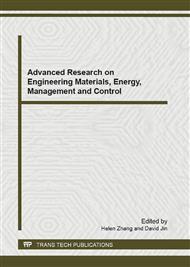p.1007
p.1011
p.1016
p.1020
p.1024
p.1028
p.1032
p.1037
p.1041
Non-Isolated High Step-up DC-DC Converter with a Coupled Inductor
Abstract:
A non-isolated high step-up DC-DC converter with a coupled inductor is proposed in this paper. The proposed converter provides high voltage gain and soft-switching operation of all semiconductor devices. A voltage doubler and a coupled inductor increase the voltage gain. Zero-voltage-switching (ZVS) of all switches and zero-current-switching (ZCS) of all diodes are achieved. Also, the voltages across the semiconductor devices are effectively clamped. Due to the soft-switching operation of all switching devices, the switching loss is significantly reduced and the high efficiency is obtained. The feasibility and performance of the proposed converter were verified on an experimental prototype
Info:
Periodical:
Pages:
1024-1027
Citation:
Online since:
January 2012
Authors:
Price:
Сopyright:
© 2012 Trans Tech Publications Ltd. All Rights Reserved
Share:
Citation:


